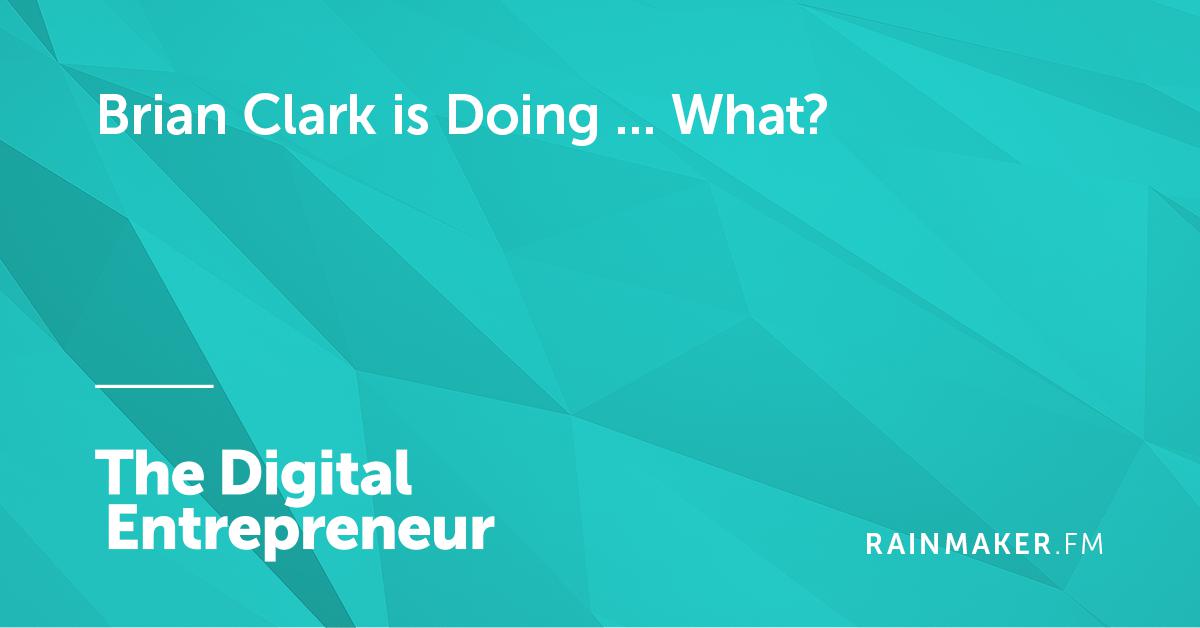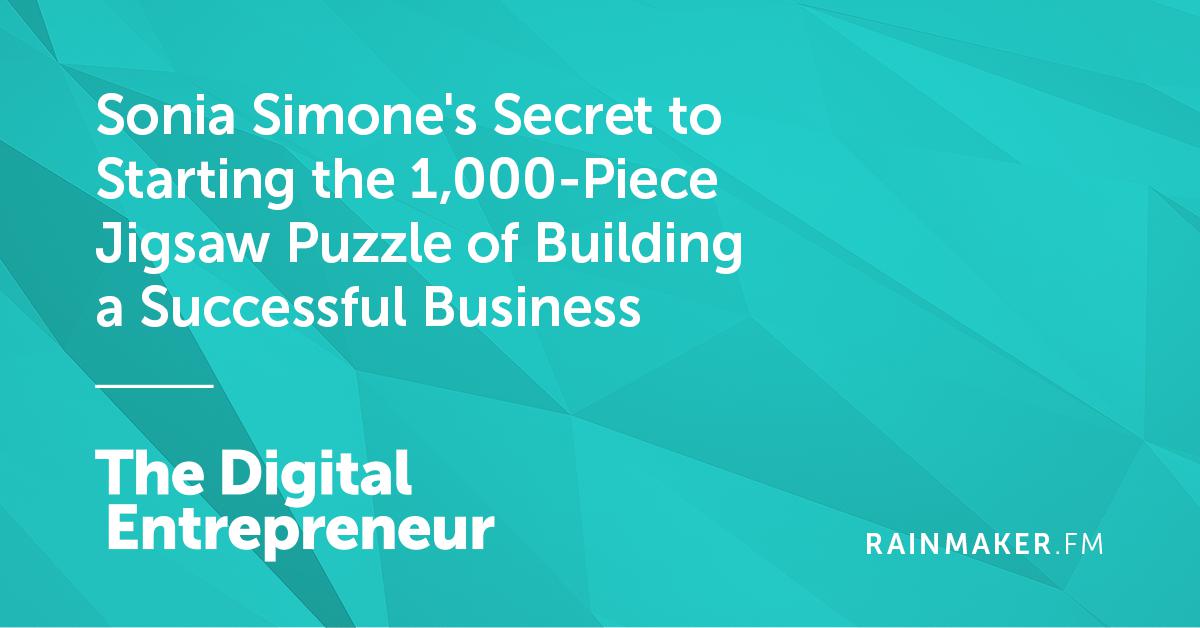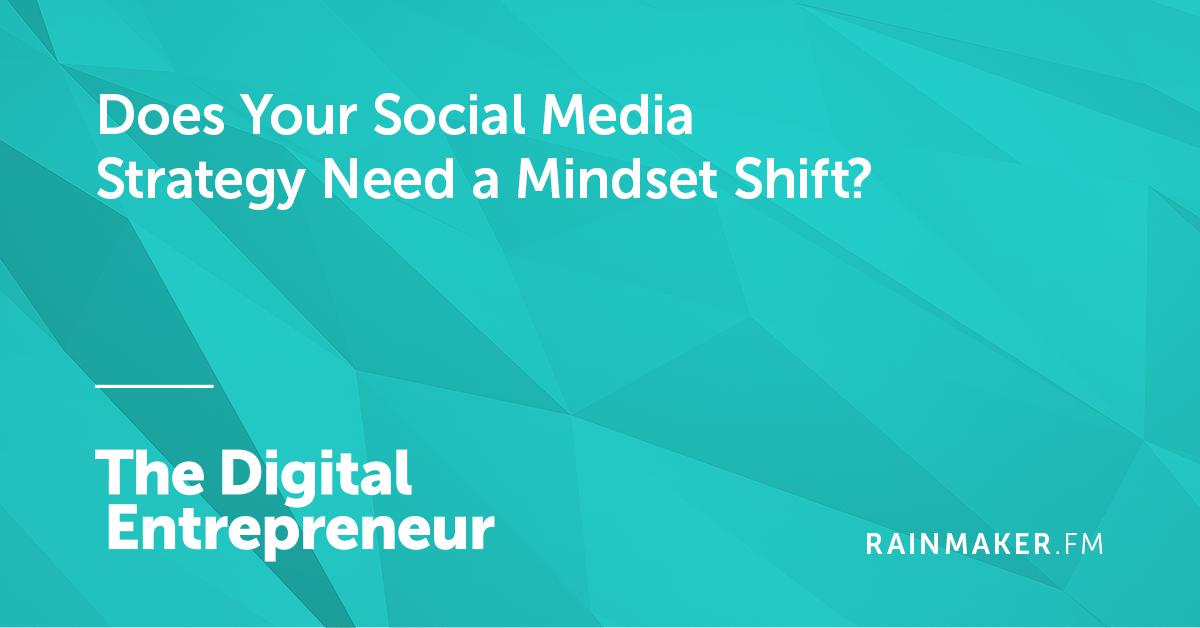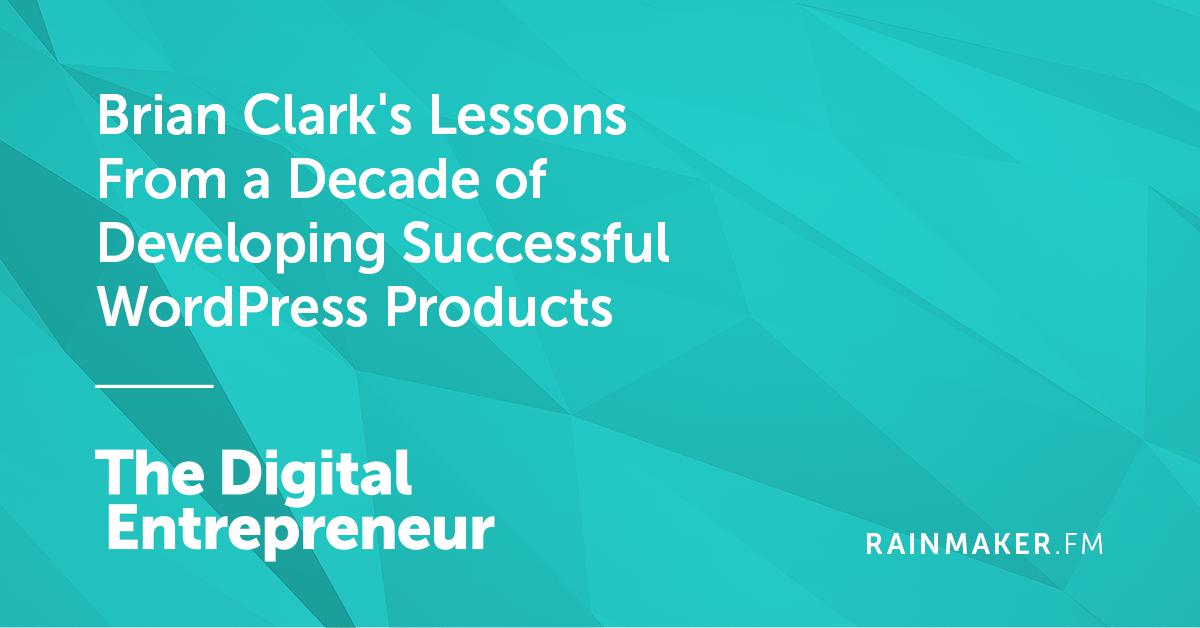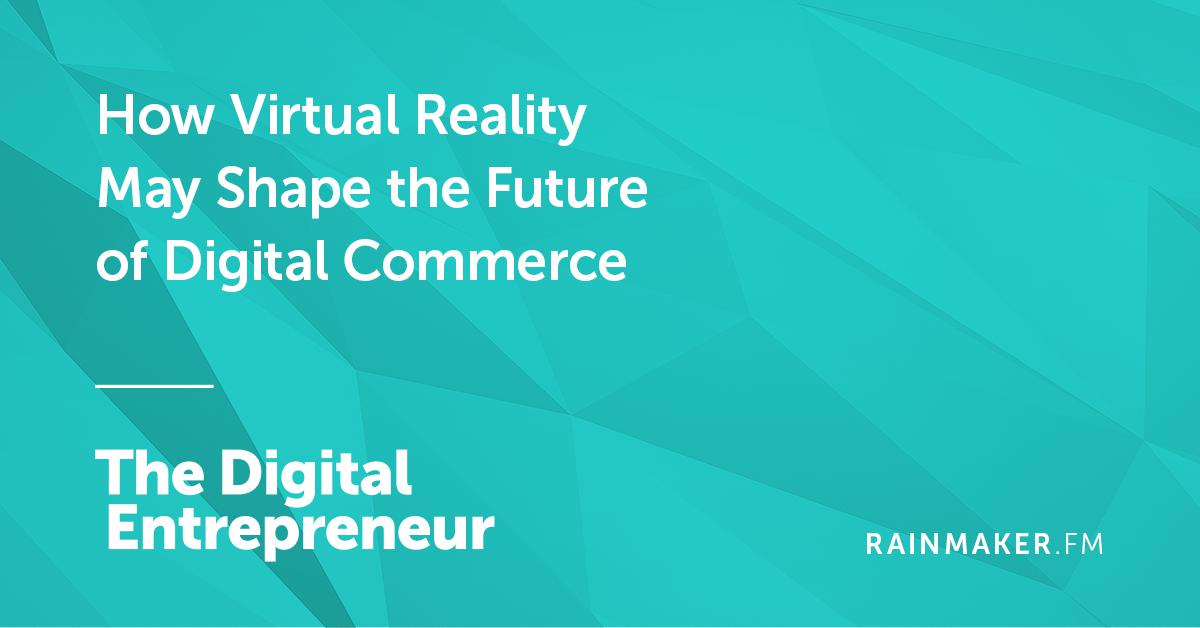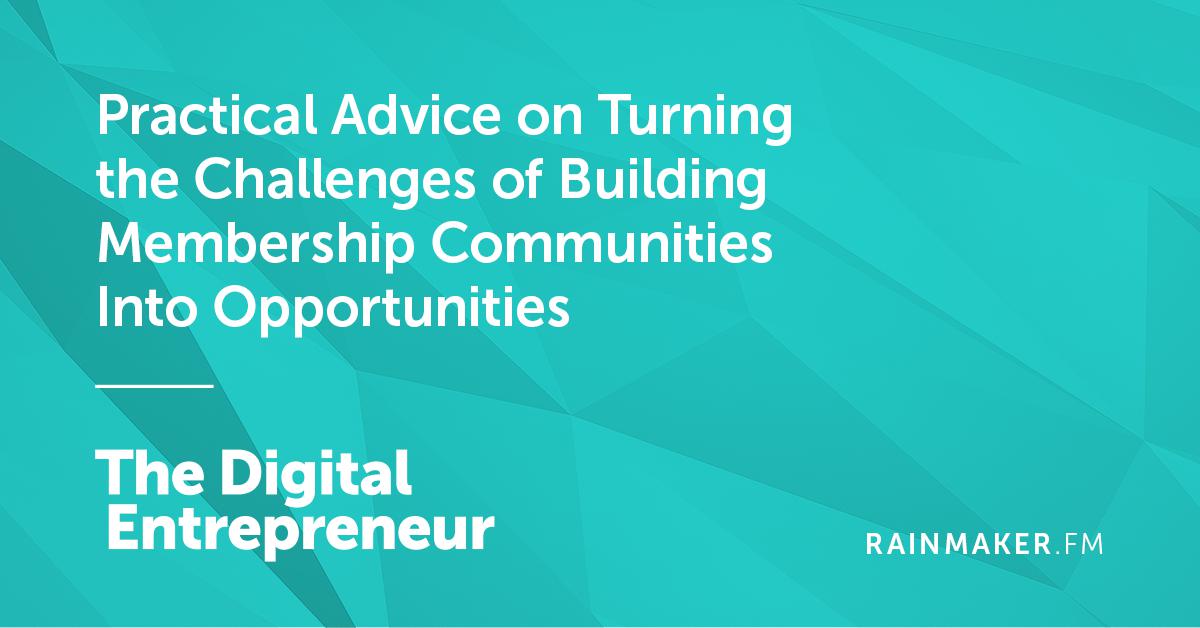
Are you thinking of launching a membership site built around education? Do you already have one, and are looking for ways to take it to the next level? If you answered Yes to either question, then this episode will be for you.
In this 28-minute episode, Jerod Morris is joined by Pamela Wilson, the Executive Vice President for Educational Content at Rainmaker Digital, to discuss what she has learned through her extensive experience creating and running successful membership communities.
Among the topics they dive into:
- What her first experience creating her own membership community was like (and how she prepared for it)
- How she has approached the challenges of running a mature membership community like Authority
- Why it’s so important to find the elusive sweet spot between effort and income — and how to know when you’re out of balance
- The potential impact of tracking your time
- The single biggest piece of advice she would give to people thinking about starting a membership community, and those already in the midst of running one
Pamela is going to be a featured speaker at Digital Commerce Summit, coming up this October in Denver, Colorado. Her session will be titled How to Cultivate a Profitable Interactive Membership Site.
We hope you’ll join us! Early bird tickets are still available: https://rainmaker.fm/summit
Listen to The Digital Entrepreneur below …
The Show Notes
- 4 Ways to Turn a Mature Membership Site into a Treasured Resource Your Members Will Love
- Authority
- Digital Commerce Institute
- Pamela Wilson
- Jerod Morris
The Transcript
Practical Advice on Turning the Challenges of Building Membership Communities Into Opportunities
Voiceover: You are listening to The Digital Entrepreneur, the show for folks who want to discover smarter ways to create and sell profitable digital goods and services. This podcast is a production of Digital Commerce Institute, the place to be for digital entrepreneurs.
DCI features an in-depth, ongoing instructional academy, plus a live education and networking summit where entrepreneurs from across the globe meet in person. For more information, go to Rainmaker.FM/DigitalCommerce.
Jerod Morris: Welcome back to The Digital Entrepreneur. This is episode No. 19 of The Digital Entrepreneur. I am your host, Jerod Morris, the VP of marketing for Rainmaker Digital. Today, I am joined by a colleague of mine here at Rainmaker Digital, Pamela Wilson, our esteemed executive vice president of educational content.
There are a couple of reasons why I asked Pamela to join us this week and why I’m so excited that she said yes. Here are those reasons. One is that Pamela’s leading our Authority educational content at Rainmaker Digital, and she has spearheaded some initiatives to grow it and make it better. I have some questions I want to ask her about those initiatives.
Number two, Pamela’s going to be a featured speaker at Digital Commerce Summit, which is coming up this October in Denver, Colorado. Her session will be titled How to Cultivate a Profitable, Interactive Member Site.
In addition to what she’s been doing with Authority, I want to get some of Pamela’s general ideas on what it takes to build a membership site that provides value and drives profits because I know that many of you are working toward that goal right now.
By the way, if you don’t have your ticket yet to Digital Commerce Summit, I do hope that you’ll consider joining us in the Rockies this fall. Early bird tickets are still available, so you’re definitely not too late. Don’t worry about that. You’re not too late. You can still get a great price on a ticket.
Pamela’s going to be speaking, as I said. I will be speaking there, and of course, Brian Clark and Sonia Simone will be speaking as well. They’ve been guests on the last two episodes of The Digital Entrepreneur, along with a host of our friends from around the digital entrepreneurship space, including Rand Fishkin, Jeff Walker, Tara Gentile, Joanna Penn, Chris Lema, and many, many, many more.
This is the conference and networking event where you will discover smarter ways to create and sell profitable digital products and services, so don’t miss it. For more information, go to Rainmaker.FM/Summit. That is Rainmaker.FM/Summit.
With that, I would like to welcome Pamela Wilson to the show. Pamela, thank you again for carving out the time to join us on this week’s episode.
Pamela Wilson: I am so happy to be here, and I love this topic. It’s a fun thing to talk about.
Jerod Morris: It’s a good one, and like I said, you have a lot of experience to talk about this, which is why I’m so excited to have you here as the person to share some experience and share some knowledge with the audience.
Let’s start there. You have really extensive experience in online education, dating back to well before you joined the Rainmaker Digital team. Can you give us just a brief overview of what you were doing prior to joining Rainmaker, which was then at the time Copyblogger, and how that informed the work that you’re doing now?
How Pamela Eventually Turned a Childhood Dream into Reality Thanks to the Internet
Pamela Wilson: Right, so I’m sitting over here trying really hard not to laugh at that introduction because I guess I have extensive experience, but I want to share this with people. This might be something they can relate to a little bit more. I actually always wanted to be a teacher. When I was growing up, I wanted to be a teacher. My grandmother had been a teacher. And I was in FTA in high school, which is Future Teachers of America, so this was my dream.
Jerod Morris: That is not a surprising revelation at all.
Pamela Wilson: Okay, so that’s not surprising, but the interesting thing is, my mother actually discouraged me from becoming a teacher.
Jerod Morris: Really?
Pamela Wilson: Well, she saw that I had always been creative growing up, and she really encouraged me to go into a creative career, which I did. That was my entire career. I worked as a designer and a marketing consultant for decades, really.
After doing that for decades, I started to get antsy. I wanted to do something else, and I started looking into building an online platform and teaching online. I ended up moving into that, so I guess I showed my mom, like, “I showed you, Mom.” I eventually ended up doing the thing that I had dreamed of.
Jerod Morris: You know what’s so interesting about that is you find that a lot when you look around, and you look at successful people. Maybe they’ve been successful in business or something in digital entrepreneurship, but so many people have brought a passion from their childhood and found a way to weave it in there.
It’s like you have found a way to combine your creativity and your business acumen with your ability to teach, which is great. I grew up as a huge IU basketball fan, and now I’ve found a way, with the skills that I’ve learned building membership communities and a podcast, to bring that passion back into it. It’s kind of funny how those things will naturally just start come back. It’s very interesting.
Pamela Wilson: Honestly, I think that’s one of the most beautiful things that the Internet offers us. We really can explore those passions in a place that allows it, and we can find other people that have the same passions. It’s a great way to connect with people who have those same geeky interests that we do. You get to draw from all of humanity. Anyone who is connected to the Internet can find you, so it’s pretty amazing.
I ended up looking into how to do this, and right around the time that I was looking for how to build this online platform, I found Copyblogger. That was like 2009, so it’s not like Copyblogger had been hiding or anything. But I just happened to stumble on Copyblogger at the moment when I needed it.
Just a couple of weeks after I found the site, they were re-opening Teaching Sells, which was the seminal course on how to build online courses. I signed up for that, and so my online teaching story is very much interwoven with Copyblogger’s story and how Copyblogger teaches things.
I learned how to create online courses by taking that course, and then built my Big Brand System site, built a course there to teach basically what I had learned to do in my career, but boiling it down so that people who didn’t have a design background or didn’t have marketing experience could understand it and apply it to their own businesses.
Once I did that, I created all of these smaller products, so I created a product called The Ebook Evolution, which helps people to create ebooks by themselves, PDF e-books mostly, Site Setup Kit, which was to help people who had no web developer background build a website that they could control themselves, and then a product called Visual Buzz 101, which was basically to help non-designers create great-looking images for their web presence.
Jerod Morris: What’s interesting about that, you had this formal training with the Teaching Sells, of developing courses, and then you got into it and went out and did it on your own. I imagine from the experience of Teaching Sells, you had a pretty good roadmap to follow. You knew what to expect, but doing it for the first time with Big Brand System and doing it on your own, what were some of the things that surprised you about the experience?
What Pamela’s First Experience Creating Her Own Membership Community Was Like (and How She Prepared for It)
Pamela Wilson: Honestly, that’s one of the coolest things about being part of this team now is that so much of our effort is focused on making the Rainmaker Platform awesome. The biggest surprise to me was how difficult at that time–this is back in 2010–how difficult it was to put together the technical pieces that I had to put together to create the membership site. I felt like I was scaling Mount Everest. It was seriously way beyond my technical pay grade to put that together, so that was surprising to me.
The course part, I felt like the education in Teaching Sells really helped to guide me so that I could put together education that was useful, effective, and all of that, so that part was great. Then the technical piece was just a nightmare, so it’s very cool to be on the other side of that now and helping to contribute, even in a small way, to this product that just makes all of those things so much easier.
I loved it, though. That whole experience of building a community around something that you’re teaching, I loved that.
Jerod Morris: Speaking of that, let’s talk a little bit about Authority. As a I mentioned earlier, you’ve been leading our Authority membership program. I’ve been a really interested observer, watching you systematically, methodically make improvements over there.
Can you provide an overview of where Authority was when you got involved with it and what you’ve tried to do to take what was working and make it even better?
How Pamela Has Approached the Challenges of Running a Mature Membership Community Like Authority
Pamela Wilson: Right. Sonia and I worked together to come up with this plan. We wanted to inject new energy into this program. It was already a solid program, but it had been around for a while. This is one of the interesting things. A membership site at the very beginning of its life cycle and then after it’s been around for a while, it has a different set of challenges.
Some of it is just making the information easy to consume and making it easier for people to get their way through all the information. After it’s been around for a while, you have a lot of information, and people’s first reaction is, they get in there, and they’re like, “Ah, I don’t know where to start.”
It was that, but it was also encouraging people to consume the information. I was looking for ways that we could involve the community more, and I’ll talk about how we did that. Then I was also looking for ways to just simplify the process, the production process on our end, and make it a little bit more predictable. That’s how I came to this idea that I’m going to be talking about at the summit, which is finding this sweet spot in-between your efforts and your profits.
Jerod Morris: Yeah. You mentioned some of these challenges of an older membership site that’s been around a while. It doesn’t have that new car smell and feel. It’s like anything else. You can look at that, and there are challenges there, but you can also flip it around. You can say, “Okay, but what does this make possible?”
Pamela Wilson: Exactly.
Jerod Morris: There are some challenges, but how did you then overcome those challenges, building upon what was already there?
Pamela Wilson: Right. One of the things was to just encourage community. These are all such small things, but one thing was, in our weekly webinar–we have a webinar, a live webinar, every single Friday–and one thing that I’m doing on a lot of those webinars is I incorporate shout-outs to people who have posted in the forum and might have a question. That just helps people to know what’s going on in their community and maybe drives them into the forum to participate a little bit more. That was one thing.
Another thing is just to develop content that highlights our members, what they’re doing, and what their challenges are because so many people have very similar challenges. I set up this schedule of webinars that we do, and it’s basically the first week of the month is always the same kind of webinar. The second week is something else. The third week is something else, so it’s a very consistent … you know me well enough. I like systems and processes. I’m really into that.
I found it made it more predictable for our members, but it also was easier to create content for the program when I had these predetermined buckets that I had to fill. What we’re doing is, the first week of the month, we have this master class educational session. That is no-holds-barred, pure education. We’ve really put a lot of effort you joined us, actually, you and Loryn Thompson joined us last month, or earlier this month, I guess, for the educational session in June.
That’s usually a very high-level and in-depth educational session. We typically create a downloadable worksheet or some kind of handout so that people can apply what they’re learning to their own businesses.
The second week of the month, we’re calling it our ABC sessions, Authority Business Coaching. We invite people to apply to be on these sessions. Then when they are with us live, we do all sorts of things. We look at their websites. We talk about their marketing efforts. We talk about how they could build an email list. We talk about also what’s working because a lot of people have things that are working really well, so it’s a matter of building on their strengths.
That ends up being almost like a private coaching session that others can watch and benefit from. Because so many of us are dealing with the same kinds of business challenges, people have loved those sessions. We’re so grateful for the people who volunteer to basically put their businesses out there and get coaching live. They seem to benefit from it, but then the people watching benefit as well. Those have been a lot of fun.
Then we have always done a live Q&A session every month, and we’re continuing with those. We like to call those mini coaching sessions because it’s an opportunity for people to ask a question directly of staff members from Rainmaker Digital, who are the people manning those sessions. Sonia and I do a lot of them, but I invite special guests in, too.
Then we do this Behind the Scenes session at the end of the month, which is basically highlighting a member who has had some success in some area. We have all sorts of different members with all sorts of different businesses. They might have a product launch that went really well, and they want to talk about that. Or they did something for their email marketing that just made their list grow like crazy, so they talk about that.
It’s just an opportunity to highlight members who have figured something out, and they want to share it with the rest of the membership. Those have also been popular. Basically, 50 percent of our content is highlighting a member of the community inside Authority, and that has been so much fun. It has really helped me to get to know our membership better, and I think members have enjoyed just getting to know one another’s businesses and learning.
Jerod Morris: Yeah. It creates community. It puts people into a spotlight, which people like. And like you said, with the coaching opportunities, the one-on-ones, that’s a great way to provide really significant, specific, one-on-one value to folks, but also value that others can learn from. Those Q&As, even if you don’t have a question answered, a lot of times it can be really valuable.
We’re not going through all of the things inside of Authority here as a commercial for Authority. It’s really more to let you see some of these options that we’re doing. For anybody who’s listening to this who has their own membership site or is thinking about doing it, these are all ideas that you can incorporate into your own.
Why It’s So Important to Find the Elusive Sweet Spot Between Effort and Income–And How to Know When You’re Out of Balance
Jerod Morris: The challenge, of course, is that it’s not easy to do this, and I’m sure, Pamela, as people heard you talking about doing this every week, and this every week, and this every week, it can sound a little bit like this intimidating machine that just needs to constantly be fed. This is where I want to transition into your talk at Digital Commerce Summit. You’re going to be talking about this.
Obviously, you can’t just spend 24 hours of every single day creating new membership content. That’d be perfect, and you’d create, I guess, more value, but the goal is, for gathering a community around you to teach–and to make money doing so–as you said earlier, is finding that elusive sweet spot between effort and income.
How do we find that sweet spot, and how do you do all of this inside of Authority and still make sure that it is a profitable use on your time that’s getting a good return on the investment?
Pamela Wilson: Right. Again, that’s where approaching this as, rather than something that you have to just keep doing week after week, and month after month, I actually find it very freeing to have created these … I like to call them ‘content buckets.’ I know it’s a very technical term, but it’s content buckets.
You know the first week of the month, you’re not starting from scratch. You know what you need to put together, and the second week of the month, you know what you need to put together. Frankly, some of these sessions require a lot more time and preparation than others. For example, the educational session, I put a lot of time and effort into creating those, and I want to make them really, really high value.
We want them all to be high value, but for example, for a Q&A, all I really have to do is to look through the questions. Sometimes I do some minor research on things I want to recommend to people, but there’s not as much prep time.
Having this schedule and this system in place really helps you to pace yourself as you’re creating content for your membership program. That’s where that sweet spot comes into play. You do have to find this place where the time and the money that you’re pouring into your membership program is balanced by your profit. Profit is earnings after you pay all of your expenses.
You have to make sure that any money that you’re spending to keep your membership program alive is balanced with the effort and the time you’re putting into it. You have to do the equation and make sure it’s all worth it.
Jerod Morris: Obviously, a big part of tracking that is knowing your numbers, literally having those numbers there. Are there any other warning signs that you might be able to shed some light on that maybe hint at the fact that this is a little bit out of balance? Anything that you’ve found, outside of just literally tracking the numbers?
The Potential Impact of Tracking Your Time
Pamela Wilson: Yeah. Honestly, I think people have to be willing to do the hard math of saying, “How much time am I pouring into this? How much am I earning from it, and how much does that end up giving me per hour?” for example.
As content creators, a lot of us get really caught up in the content creation process, and sometimes we don’t step back and say, “How many hours am I actually pouring into this, and how much profit am I actually seeing?” It can be hard to do that because sometimes you don’t like the answer, but it’s always better to know the answer and to just say, “Okay, obviously I need to make some adjustments here, and I’ll just make them.”
As much as possible, I love the idea of trying to systematize your content creation for any kind of a program, membership program, any kind of a teaching product. You want to try to systematize it as much as possible. If you own your own business, you always want to look for things that you could hand over to someone who you don’t have to pay as much as what your time is worth.
Look for an assistant-type person, a virtual assistant. Some people use college students who are trying to get experience, and they pay them a paid internship. They’re able to do some things that are important, but maybe can be taught and passed over to someone else once you give them a process. Like any good business owner, you do have to look for ways to do that, that keep your expenses down, and then free up your time so that you can focus on the more high-level stuff.
Jerod Morris: Do you actually track your time?
Pamela Wilson: I don’t track my time now. I used to, though. When I was running my own business, I did. I would track my own time. When I was working for clients, obviously I would track time for them. I never charged by the hour. I always charged by the project price, but I always tracked my time because I just wanted to see. It’s like, “This is what I estimated this project would take me to do. How long did it actually take?” That made me much more accurate over time when I went to estimate projects, so yeah, I did that as a habit.
Jerod Morris: It’s interesting. I hosted a case study inside of Digital Commerce Academy with Andrea Vahl, someone that you know very well. She was telling the story of these two different campaigns she did because she’s obviously very big on testing, which is a smart thing to do.
She had this campaign in February, this launch campaign, and she was going over these different variables and different results for how many people opted-in, different lead magnets that she had, and all these different things. One of the things that she tracked to see how successful this was, was time. For instance, the first campaign took her 15 hours, and the second campaign took her seven hours, and that was all kind of factored into, “Okay, how successful was this?”
It was kind of eye opening for me because we track lots of different variables, like cost per click and all these other different things, and trying to compare the revenue from one to the revenue of the other. In our heads, we understand that we want this to take a little bit less time, but when you actually put the time there, you see the hours that it took.
I hadn’t thought about doing that, but I’m actually considering starting to do that now for myself, just to track the time and see, “Okay, how much is this really taking me? What am I getting out of this?” I’ve never wanted to do it because it just seems a little bit annoying. Maybe not do it forever, but to do it for six months just to see and get a gauge., I think it really could be useful and helpful.
Pamela Wilson: It’s kind of like people who are dieting, and they keep a food log.
Jerod Morris: Yes!
Pamela Wilson: They log every single bite that goes in their mouths, and sometimes it’s very eye opening. Or you start wearing a Fitbit, and you’re like, “Oh, gosh. Maybe the reason I’m not very in shape is because I’m only walking like 1,700 steps every day.”
Jerod Morris: Yeah. You know the funny thing about that is I’ve lost maybe 11, 12 pounds in the last three months, and a big part of it is because I started tracking my calories. When you can actually see it, it does, it helps you eat less because you’re like, “Whoa, I’ve already had that much today. Okay. Let me back off a little bit at dinner.”
Pamela Wilson: Yeah. It’s like knowledge is power.
Jerod Morris: It really is.
Pamela Wilson: Yeah, and that is an old habit from having owned my own business for many years. One of the things that you realize is you are one person, and you only have 24 hours. You can’t manufacture more time for yourself, so you start to become very efficient at using your time, then taking the things that you have to get done, and finding possibly people who can do them more efficiently so that you can focus on things that other people cannot do. It’s an old habit, but I think it’s a good one.
Jerod Morris: Pamela, for the digital entrepreneur who’s out there right now, who’s listening to this episode, and who is considering going down the road of building an educational membership site–they haven’t yet, but they’re thinking about it–what’s the biggest piece of advice that you would give that person about how to get started?
The Single Biggest Piece of Advice Pamela Would Give to People Thinking About Starting a Membership Community, and Those Already in the Midst of Running One
Pamela Wilson: The biggest thing when you’re starting out a membership site is there is this feeling like, “Okay, I’m getting on this hamster wheel, and I can’t ever get off. I just have to keep creating content for my membership program.” Depending on how you structure it, it might be a membership program that doesn’t have ongoing content, but either way, there is this feeling like you have a tremendous amount of work ahead of you.
I would say anything that you can do to simplify your processes and set up systems from the very beginning, you will be very happy to have those things in place. Just look at all of the tasks you have going on, and see if there are things where you could bring in someone to help you with them.
See if there are ways that you can create, like I said, content buckets, consistent content that you create week after week, so you’re not starting from scratch. Find ways to maybe have some weeks that take more time and effort and some weeks where it doesn’t take as much. You’re still delivering the value, but maybe it doesn’t take quite as much time and effort to produce. Even hamsters have to take a break once in a while.
Jerod Morris: That’s right. How about for the digital entrepreneur who already has a membership site and wants to iterate it and take it to the next level? What’s the biggest piece of advice that you would give to that person?
Pamela Wilson: Yeah. I would say, again, if you don’t have systems in place, getting them in place and finding ways to make your job easier is going to help you just keep your momentum and your enthusiasm going over the long haul.
And I’ll share this link with you. There are interesting problems that happen after you do have quite a bit of content on a membership site, and Debbie Hodge actually wrote about that for us on Copyblogger, about what you can do to organize your content to make it easier to get through, easier to find, and things like that. I’ll share that post with you. That’s a fantastic resource. Those are the problems you have once you have a membership site that’s been around for a while, and you have a lot of content.
Jerod Morris: Perfect. You will be able to find those in the show notes. Pamela, thank you so much. This was wonderful. We really appreciate your insights, and I know I am looking forward to seeing you speak at Digital Commerce Summit. It’ll be a good one.
Pamela Wilson: It’s going to be so much fun. I can’t wait to be there.
How to Take Your Digital Business to the Next Level
Jerod Morris: It is. It’s going to be great. We hope that you will join us. Again, the conference is October 13 and 14 in Denver, Colorado. For more information, go to Rainmaker.FM/Summit. There are still early bird tickets, and as I mentioned earlier, it’s going to be a great event, and it’s the place where you will discover smarter ways to create and sell profitable digital goods and services.
Maybe you have a digital product or service, and you want to take it to the next level. Maybe you’ve been thinking about it. You’ve been thinking about getting started. This conference would be great for you as well. Rainmaker.FM/Summit.
We hope to see you there, and we hope to see you on the next episode of The Digital Entrepreneur, which will be here next week. Until then, take care, everybody.
